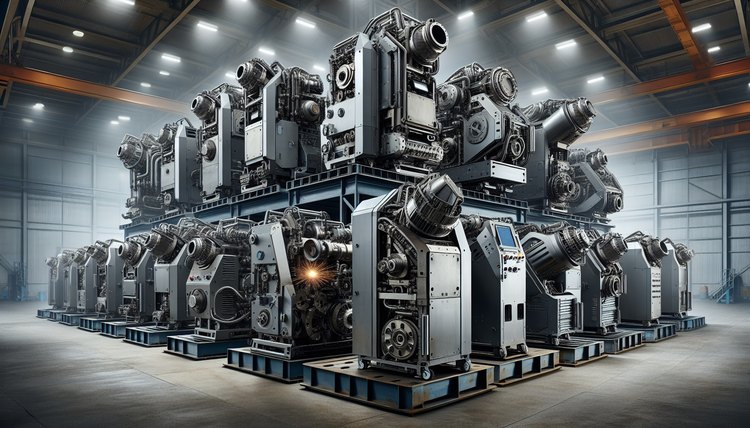Cartoning Machine Guide: Types, Workflow, and Selection
A cartoning machine is a critical piece of packaging equipment for many industries, from pharmaceuticals to food and consumer goods. It automates the process of erecting cartons, inserting products and leaflets, and closing or sealing boxes, increasing throughput and consistency while reducing labor costs. This article explains how cartoning machines work, the main types and features, integration and maintenance considerations, and how to choose the right model for your operation.

How does a cartoning machine work
A cartoning machine performs a linear or rotary sequence of operations that convert flat blanks into finished cartons. Typical stages include magazine feeding of blanks, carton erecting (folding and tucking), product insertion, optional inclusion of inserts or leaflets, and final closure by tucking, gluing, or heat-sealing. Machines can be configured for intermittent motion—where the line stops briefly for each cycle—or continuous motion for higher speeds. Sensors and servo motors coordinate timing, ensuring accurate placement and minimizing jams.
Modern cartoners use a combination of mechanical guides, vacuum suction, and pneumatic actuators to handle varying carton materials and product shapes. Changeovers between carton sizes have been simplified on many models with quick-adjust features or recipe-driven setups stored in a human-machine interface (HMI). This reduces downtime and helps manufacturers respond faster to changing SKUs.
What are the common cartoning machine types
Cartoning machines are broadly categorized by motion, product orientation, and closure type. Intermittent motion cartoners are often preferred for fragile products or applications requiring precise insertion, while continuous motion cartoners suit very high-speed lines. Vertical cartoners insert products from above and are ideal for loose-fill items; horizontal cartoners are better for bottles, blister packs, or products that must remain upright.
Other distinctions include mechanical versus servo-driven machines—servo systems offer finer control and faster, tool-free changeovers—and single-lane versus multi-lane designs for handling multiple products in parallel. Many manufacturers also offer custom attachments for unusual shapes, bundled sets, or integrated labeling.
What key features and integrations matter
When evaluating cartoning equipment, several features impact performance and long-term value. Look for reliable blank feeding systems, positive carton erecting mechanisms, and robust sealing methods compatible with your carton board and contents. Integrated vision systems and product sensors reduce mispacks and enable in-line quality checks. Consider modular designs that allow future additions—like leafleting units, inserters for instructions, or tamper-evident sealing modules.
Connectivity is increasingly important: machines with Ethernet/IP, OPC-UA, or other industry protocols can communicate with upstream and downstream equipment, enabling electronic job changeovers, remote diagnostics, and Industry 4.0 data collection. Safety features, easy access panels, and parts availability from the manufacturer also play large roles in uptime and maintenance efficiency.
How to choose a cartoning machine and local services
Selecting the right cartoner starts with defining your production requirements: typical carton sizes, product dimensions, throughput targets, and desired uptime. Factor in the level of automation you need—fully automatic cartoners reduce manual handling but require a higher initial investment. Space constraints, utilities (air, power), and staff skill levels influence the practical choice. For flexible operations with many SKUs, prioritize machines designed for quick changeovers and recipe-based controls.
Working with local services in your area for installation, training, and preventative maintenance ensures smoother start-up and faster response when issues arise. Many suppliers offer onsite commissioning and operator training packages; independent service providers can supplement OEM support for ongoing maintenance. When possible, visit reference installations or request video demonstrations to see the machine handling parts similar to yours.
What are common maintenance and operational best practices
Routine maintenance keeps a cartoning line reliable. Establish a schedule for lubrication, belt and chain inspections, sensor cleaning, and replacement of wear parts like suction cups, knives, and glue nozzles. Keep an organized spares kit focused on high-wear items to minimize downtime. Train operators on correct loading techniques for blanks and products, and create standard operating procedures for changeovers and fault recovery.
Monitoring machine data—cycle counts, fault logs, and downtime causes—helps prioritize improvements. Small process changes, such as consistent carton blank quality and proper storage of board stock, often have outsized effects on performance. A culture of continuous improvement, with operators empowered to report and resolve recurring issues, yields the best long-term results.
Conclusion
A cartoning machine can be a transformative investment for manufacturers seeking higher throughput, better packaging consistency, and reduced labor dependence. Understanding machine types, essential features, integration needs, and maintenance practices helps you select equipment that aligns with your production goals. Engaging reputable local services for installation and ongoing support will protect uptime and extend the useful life of your cartoning line.






